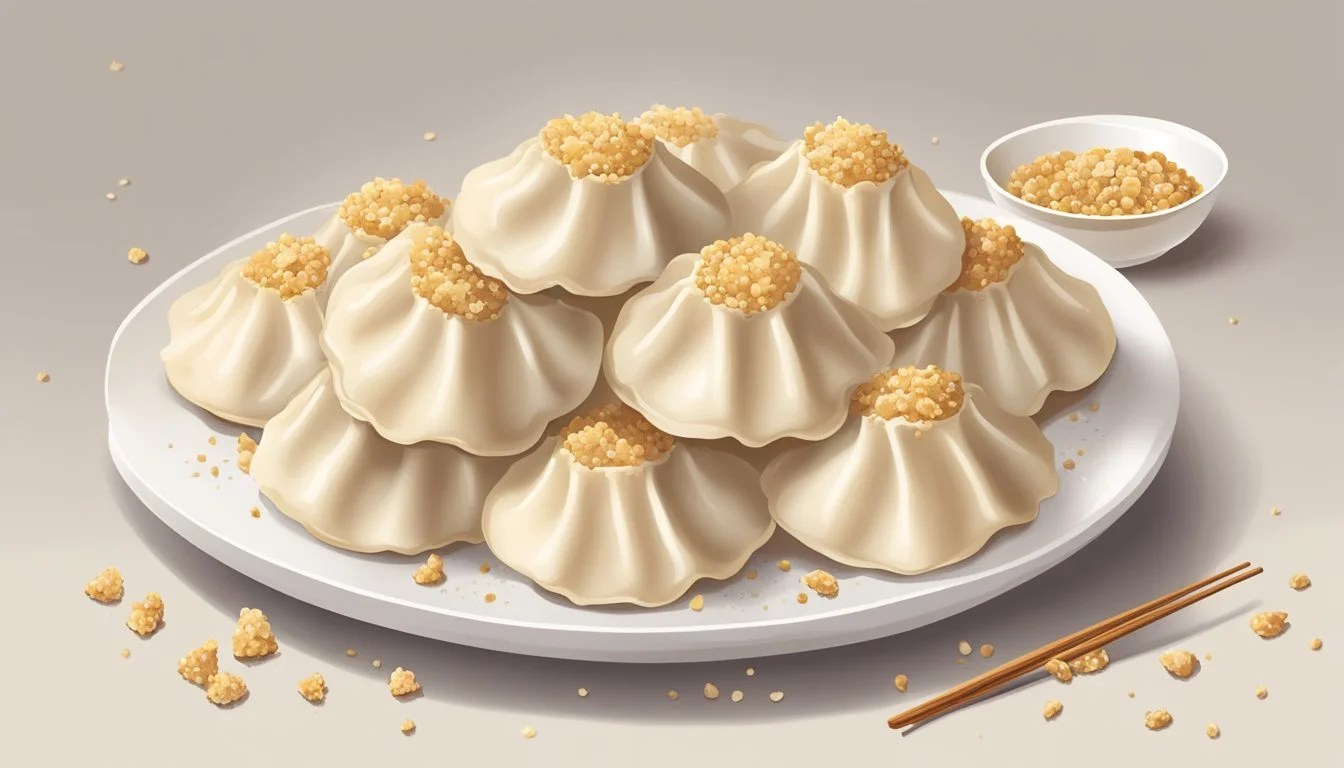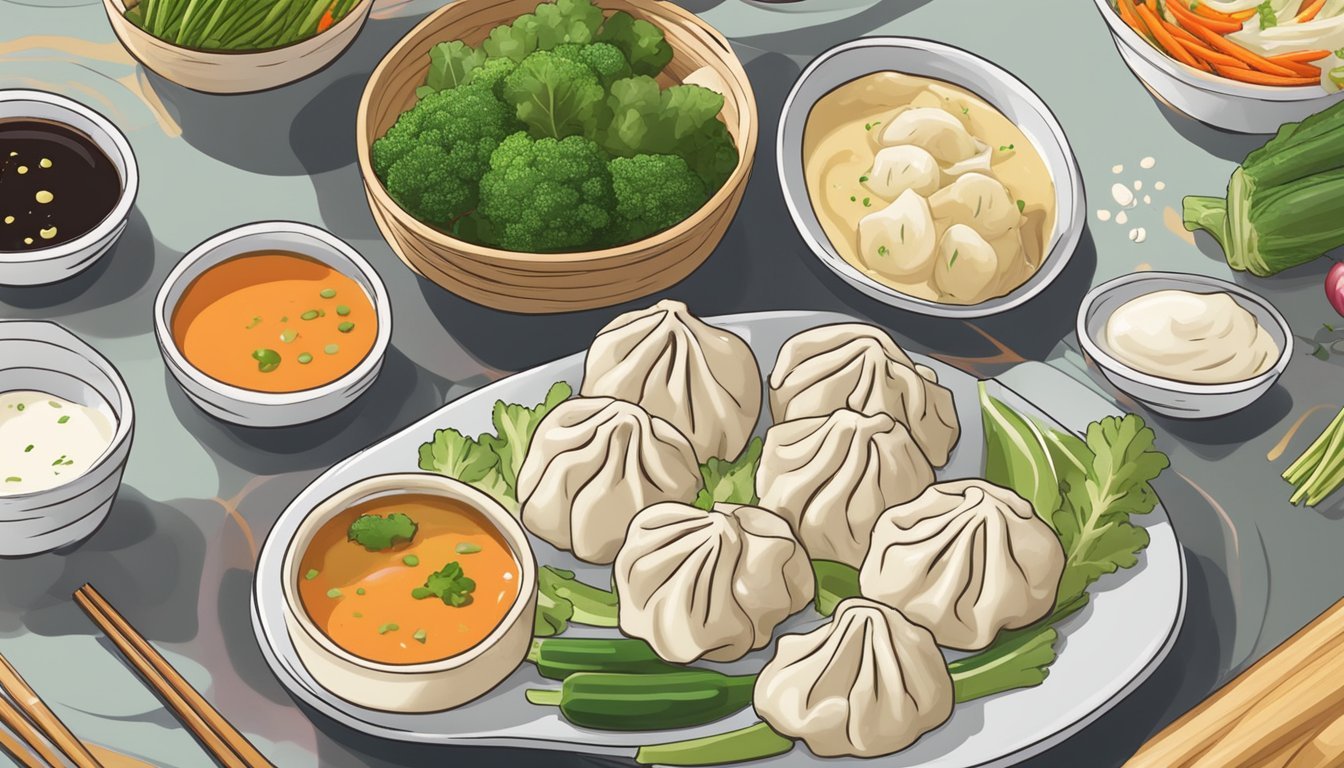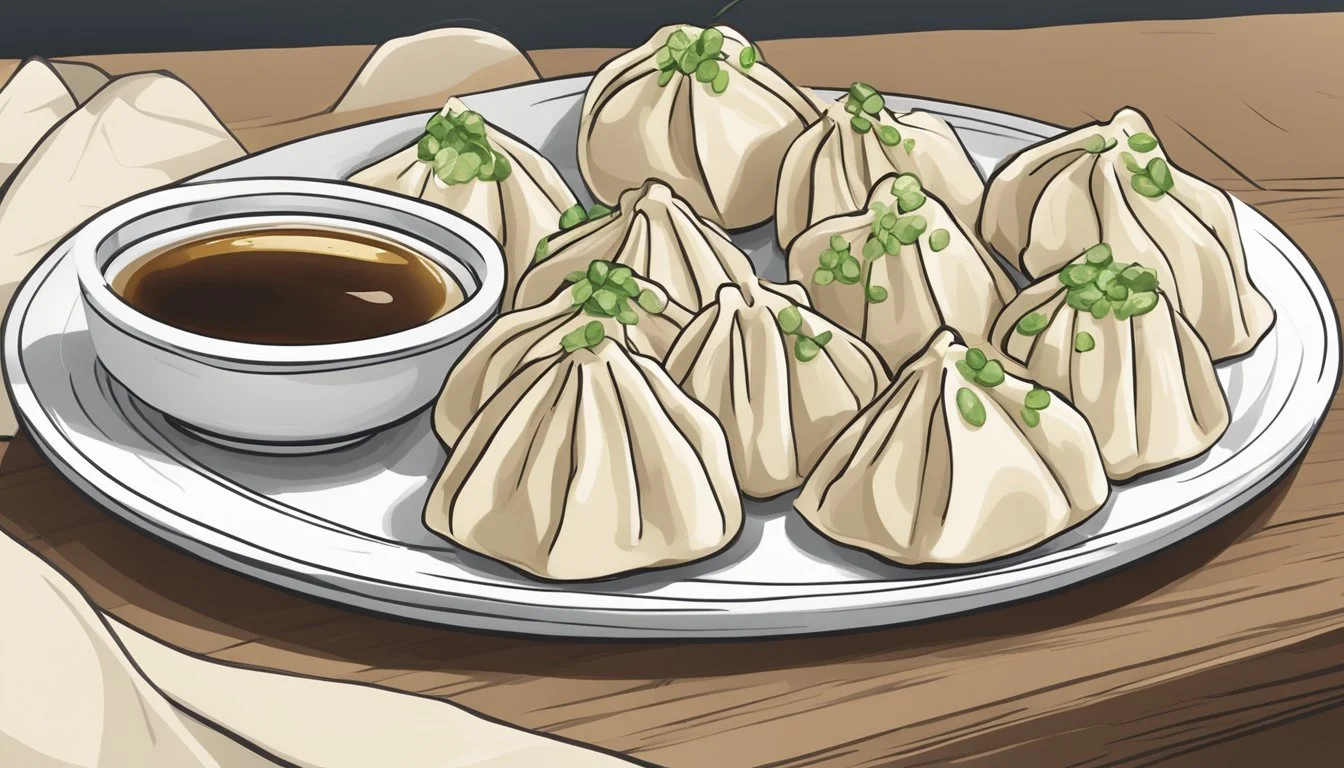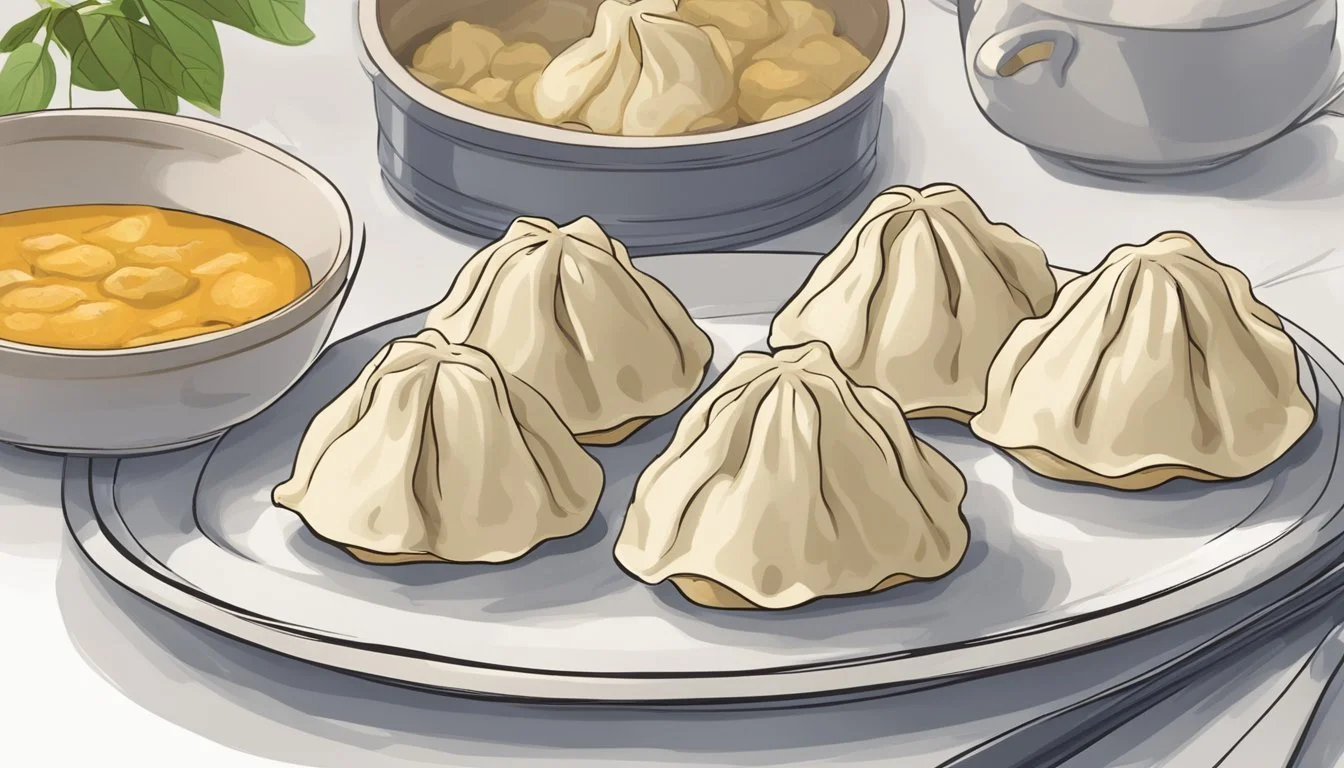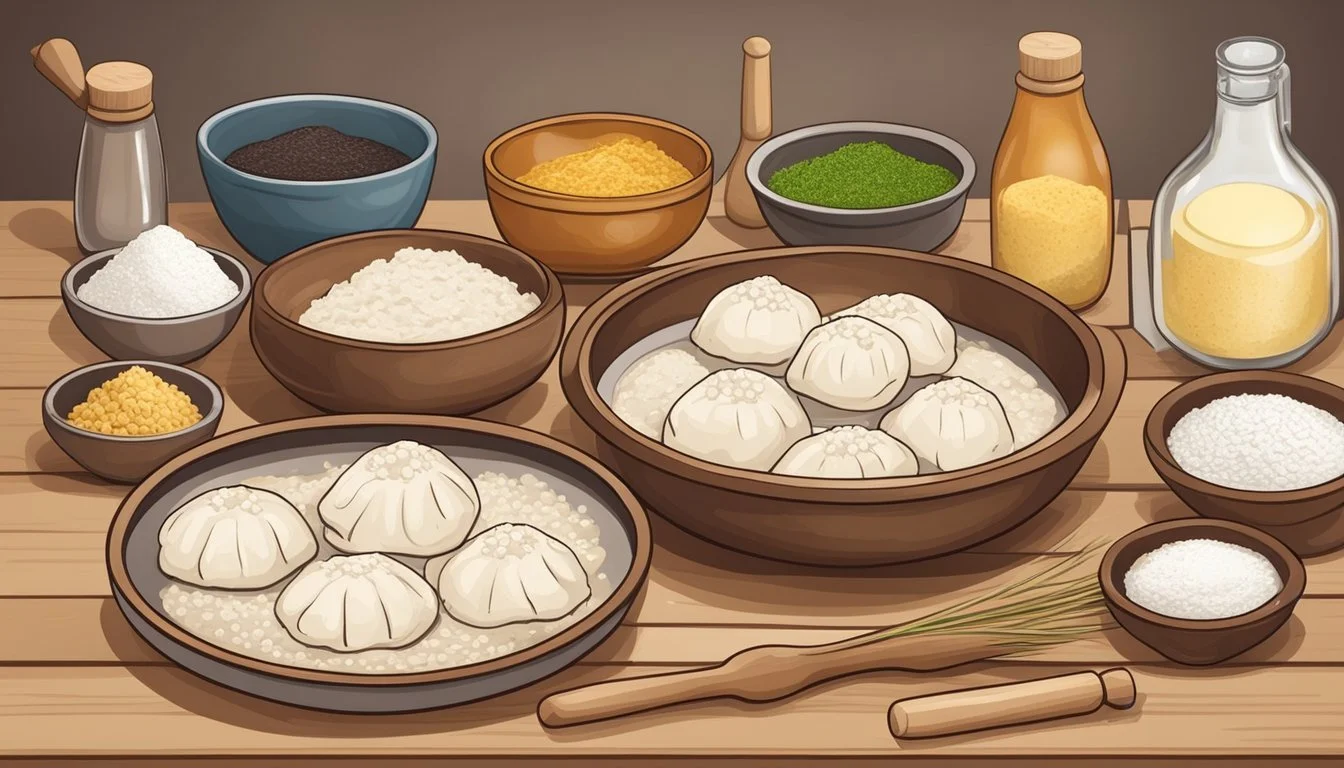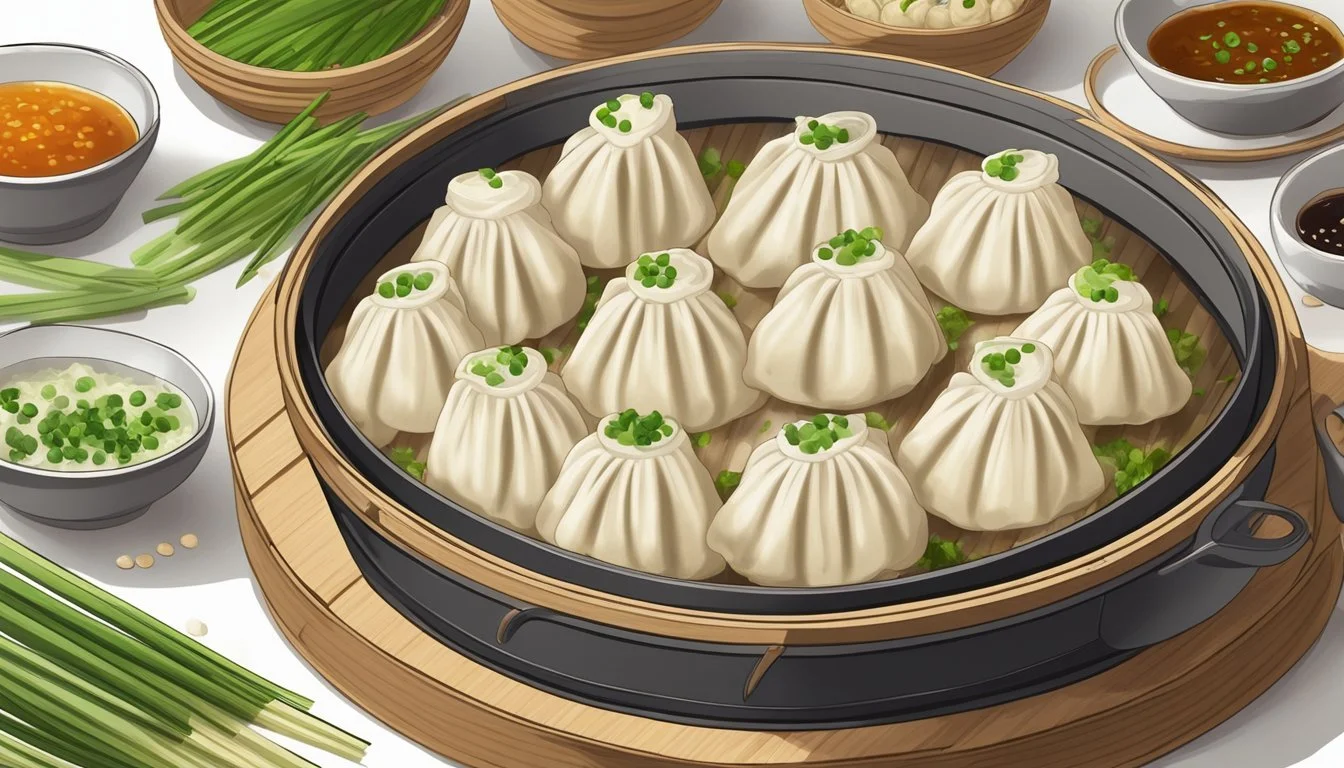How Long Do Gluten-Free Dumplings Last?
Storage Guidelines and Tips
Wondering how long gluten-free dumplings can last? These delicious morsels are a staple for those on a gluten-free diet, offering a comforting and safe option for individuals with celiac disease. Generally, gluten-free dumplings will last about 3 to 5 days in the refrigerator when stored in an airtight container.
When made properly using gluten-free flour blends, these dumplings maintain their soft and fluffy texture even after storage. Freezing is also an option, extending their shelf life up to two months, making them a convenient meal prep solution. Ensuring the dumplings are fully cooked and stored properly can help maximize their freshness and safety.
For those concerned with keeping their gluten-free diet on track without sacrificing quality, properly storing these dumplings can make all the difference. So the next time you whip up a batch of these savory treats, remember the storage tips to keep them delicious and safe to eat longer.
Understanding Gluten-Free Dumplings
Gluten-free dumplings provide a delicious alternative for those who cannot consume gluten and are made using specific ingredients that replicate the texture and taste of traditional dumplings. The key subtopics include what defines gluten-free dumplings, the common ingredients used, and the various flour alternatives available.
Definition and Significance
Gluten-Free Dumplings are dumplings made without gluten, a protein found in wheat, barley, and rye. They hold significant importance for individuals with celiac disease or gluten sensitivity. These dumplings are crafted to mimic the texture and flavor of traditional dumplings but use alternative flour and binding agents. Offering a dietary solution, gluten-free dumplings ensure everyone can enjoy this comfort food without health concerns.
Their preparation can vary by culture, but the primary goal remains the same: to provide a safe and enjoyable meal for those avoiding gluten.
Common Ingredients
Gluten-Free Flour is a crucial component in making these dumplings. Varieties include rice flour, tapioca starch, and cornstarch. These flours are chosen for their ability to imitate the texture of gluten-containing flours.
Xanthan Gum and guar gum often act as binding agents that help mimic the elasticity and chewiness provided by gluten.
Many recipes may also incorporate glutinous rice flour (also known as sweet rice flour) for its sticky quality, simulating the cohesion typically achieved with wheat flour.
Other ingredients might include eggs, baking powder, salt, and water, which help form the dough and give it the desired consistency.
Gluten-Free Flour Alternatives
There are numerous gluten-free flour alternatives to use in dumpling recipes.
Rice Flour is popular due to its fine texture and neutral flavor, making it a versatile ingredient. Tapioca Starch is another common choice that adds a chewy texture to the dumplings.
Cornstarch provides a soft and delicate dough, while chickpea flour offers a slightly nutty flavor and higher protein content.
Another option is a gluten-free flour blend, which combines several of these flours and additional ingredients like xanthan gum for an all-in-one solution. These blends are convenient and often yield more consistent results for home cooks.
Making Gluten-Free Dumplings
Creating gluten-free dumplings involves preparing a specific dough, learning proper folding techniques, and selecting the right cooking methods. These elements are crucial for achieving the desired texture and flavor.
The Dough Preparation
The foundation of gluten-free dumplings begins with the dough. Gluten-free flour, tapioca starch, glutinous rice flour, and xanthan gum are common ingredients. In a large bowl, mix these dry ingredients thoroughly. Gradually add water while stirring until the dough comes together.
Knead the dough until it is smooth. It should be soft but not sticky. Dividing the dough into smaller portions makes it easier to work with. Use a rolling pin to roll out the dough to the desired thickness.
Folding Techniques
Proper folding techniques ensure that gluten-free dumplings hold their filling and maintain their shape. Start by placing a small amount of filling in the center of the dough circle. Fold the dough over the filling to form a half-moon shape.
To add texture and seal the dumpling, pleat the edges by folding small sections and pressing firmly. This step needs precision to avoid any gaps. Alternatively, use a dumpling press for consistent results. This helps prevent the filling from leaking during cooking.
Cooking Methods
There are several ways to cook gluten-free dumplings. Boiling and steaming are popular methods. For boiling, add the dumplings to a pot of boiling water. Cook until they float, typically in 5-7 minutes.
Steaming involves placing the dumplings in a steamer basket lined with parchment paper. Steam for about 10-15 minutes until they are soft and cooked through. Another method is pan-frying, where small amounts of oil are used to fry the dumplings until the bottoms are golden and crisp.
Each method provides a unique texture and flavor, ensuring versatility in homemade gluten-free dumplings.
Storing Gluten-Free Dumplings
Proper storage ensures gluten-free dumplings maintain their quality. Techniques vary based on whether short-term use or long-term preservation is needed.
Short-Term Storage
Gluten-free dumplings should be kept in the refrigerator if they will be consumed within a few days. To store fresh dumplings, place them on a tray lined with parchment paper.
Make sure the dumplings are arranged in a single layer and not touching each other. Cover the tray tightly with plastic wrap or transfer the dumplings to an airtight container. This prevents them from drying out or absorbing other refrigerator odors. Dumplings stored this way can last up to three days.
Freezing and Long-Term Storage
For longer storage, freezing is the best method. To freeze gluten-free dumplings, place them on a tray lined with parchment paper in a single layer.
Freeze the dumplings for about one hour, until they are solid. Then, transfer the frozen dumplings to a freezer-safe bag or airtight container, ensuring to remove as much air as possible to prevent freezer burn. Label the bag with the date of freezing. Properly frozen dumplings can last up to three months.
When ready to use, cook directly from frozen without thawing to prevent a change in texture.
Serving Suggestions
Gluten-free dumplings can be enhanced by pairing them with the right accompaniments and dipping sauces. They also fit well with various soups and stews, making for a comforting and satisfying meal experience.
Accompaniments and Dipping Sauces
When serving gluten-free dumplings, the right dipping sauce can elevate the dish substantially. Soy sauce is a versatile and classic choice, though it must be gluten-free. It provides a savory and slightly salty flavor that complements the dumplings well. For those preferring something with a bit more kick, sweet chili sauce or hoisin sauce offer a sweet and tangy twist.
Other great options include making a simple dipping sauce with chicken broth, scallions, and a dash of gluten-free soy sauce. This not only keeps the dish gluten-free but also adds layers of flavor.
A side dish such as a fresh cucumber salad can provide a refreshing contrast to the warm and hearty dumplings. Another popular accompaniment is steamed vegetables, which offer a light and healthy balance.
Pairing with Soups and Stews
Gluten-free dumplings shine when paired with soups and stews. A traditional chicken broth base makes the perfect foundation for a comforting bowl of soup. For a more hearty option, dumplings can be added to a rich beef stew where they absorb the savory flavors of the soup base.
Chicken and dumplings soup is a celiac-friendly comfort food classic. The dumplings become tender while cooking in the soup, creating a wholesome and delicious dish.
For a lighter option, a vegetable stew with a variety of fresh produce can be a nutritious and satisfying meal. The dumplings add a unique texture and make the stew more filling.
Offering these pairing suggestions can help create a balanced meal, highlighting the gluten-free dumplings' versatility.
Special Dietary Considerations
When making gluten-free dumplings, specific dietary considerations must be kept in mind to cater to various needs such as vegan requirements and allergies. Additionally, understanding the nutritional content of gluten-free dumplings is essential for a balanced diet.
Vegan and Allergen-Free Options
Vegan gluten-free dumplings can be made by using plant-based substitutes for common ingredients like eggs and dairy. Flaxseed or chia seeds mixed with water can replace eggs, while almond milk or soy milk can substitute dairy milk. It's important to ensure that all ingredients are free from common allergens such as nuts, if necessary.
For those avoiding all-purpose flour, tapioca starch and glutinous rice flour are suitable alternatives. These ingredients help achieve the desired texture without compromising dietary restrictions. Checking labels for cross-contamination is crucial for celiac individuals. Adding psyllium husk can improve the dough's elasticity, making it easier to handle.
Nutritional Information
The nutritional profile of gluten-free dumplings can vary based on the ingredients used. A standard recipe may include rice flour, corn flour, or gluten-free Bisquick. These flours tend to be lower in protein compared to whole wheat flour. Incorporating recipes with a balance of macronutrients can help create a nutritious meal.
One serving of gluten-free dumplings made with rice flour typically contains around:
Calories: 200-250
Carbohydrates: 40-50g
Protein: 2-4g
Fat: 5-7g
Adding vegetables and lean proteins to the dish can enhance its nutritional value. For those monitoring their intake, it's advisable to check the fiber content and be mindful of the glycemic index of the flours used.
Having these dietary considerations in mind ensures that gluten-free dumplings can be enjoyed by everyone, regardless of dietary restrictions.
Crafting Traditional Flavors
Creating gluten-free dumplings rich in classic flavors requires careful adaptation of traditional recipes and thoughtful incorporation of cultural ingredients. Each culinary style offers unique elements that enhance the taste and authenticity of homemade dumplings.
Adapting Classic Dumpling Recipes
Transforming traditional dumpling recipes to be gluten-free involves substituting conventional flours with gluten-free alternatives. Sweet potato flour, tapioca starch, and glutinous rice flour are excellent choices. These ingredients maintain the dough's elasticity and texture, ensuring it is smooth and workable.
Using ginger, sesame oil, and light soy sauce in fillings can mimic the traditional taste of Chinese dumplings like gyoza or potstickers. It's essential to balance these with proteins such as minced pork or mushrooms. Ginger adds a spicy zing, while sesame oil imparts a deep, nutty aroma.
For a well-rounded dumpling experience, other key ingredients include scallions and a sprinkle of chicken bouillon powder. Incorporating these elements preserves the beloved flavor profile while ensuring the dumplings remain gluten-free and delicious.
Incorporating Cultural Cuisines
Drawing inspiration from various cuisines enriches the gluten-free dumpling repertoire. For example, Jamaican boiled dumplings combine gluten-free flour with pink salt and water, creating a unique texture and flavor. These dumplings serve as a comforting staple in stews and soups.
Incorporating spices like onion and chili not only enhances the flavor but also introduces a cultural twist. Polish pierogi, typically made with dough and savory fillings, can be easily made gluten-free using similar flour alternatives.
Experimenting with fillings such as cheese, potatoes, or seasoned ground meat diversifies the dishes. Wontons, with traditional fillings like shrimp or pork, wrapped in gluten-free wonton wrappers, offer a familiar yet gluten-free option. By exploring these cultural variations, gluten-free dumplings can range from Asian-inspired gyoza to heartwarming pierogi, providing a delightful array of flavors and textures.
Tips and Tricks for Perfect Dumplings
Achieving perfect gluten-free dumplings hinges on getting the dough consistency right and mastering your chosen cooking technique. These tips will ensure your dumplings are soft, fluffy, and delicious every time.
Dough Consistency and Texture
The key to great dumpling dough lies in achieving the right texture. Knead the dough until smooth and pliable. Using a mix of gluten-free flour, tapioca starch, and glutinous rice flour can help achieve the ideal consistency.
When rolling out the dough, aim for a circle about 3 inches in diameter. Use a rolling pin to ensure even thickness, allowing for better handling when you pleat and assemble the dumplings.
Ensure the dough isn't too sticky. If it is, sprinkle more flour. If it's too dry, add a bit of water. Proper dough texture makes it easier to form dumplings that hold their shape during cooking.
Cooking Technique Mastery
Choosing the right cooking technique—boiling, steaming, or using an instant pot—is crucial. For boiling, bring a pot of water to a rolling boil and cook the dumplings until they float to the top, which usually takes about 3-5 minutes.
For steaming, place the dumplings on a lined steaming basket, ensuring they do not touch each other. Steam for approximately 10-15 minutes until they are cooked through. This method is especially good for preserving the shape and texture of the dumplings.
When using an instant pot, place the dumplings on a trivet above water and steam on high pressure for about 3 minutes with a quick release. This method is quick and efficient for soft, fluffy dumplings.
For pot stickers, heat a non-stick skillet with a bit of oil, place the dumplings in and cook until the bottoms are golden brown. Add water, cover the skillet, and steam until the water evaporates and the dumplings are cooked through.
Each technique requires attention to timing and temperature for the best results.

